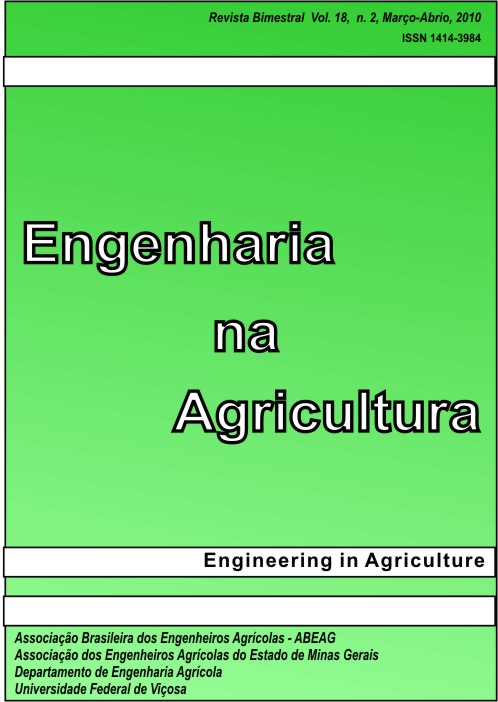TEMPERATURE CONTROL OF AIR HEATED BY A SET BIOMASS GASIFIER- BURNER IN A CONCURRENT FLOW FOR POULTRY SHED HEATING
DOI:
https://doi.org/10.13083/reveng.v18i2.44Keywords:
controle, gaseificador e biomassa.Abstract
One of the problems of using boimass gasifier for air heating in poultry sheds is the day-time energy waste due to lack of heat generation control. The diurnal temperature differential between the air and the requirement of birds is lower than the nocturnal period. During the day, the temperature in the poultry shed is controlled by curtains, but without reducing the biomass burning. The temperature can be controlled by shutting down the system, but requires constant attention of the operator. Thus, there is a potential for energy saving if the heat generation could be controlled according to the demand, represented by the temperature gradient. This study was done to control the temperature of air exhausted from a set of gasifier-burner of concurrent flow, by controlling fan velocity and by controlling entrance of primary and secondary air into the mixer. The experiment was carried out in the Energy and Pre-processing area of Agricultural Products at the Department of Agricultural Engineering, Federal University of Viçosa. The air heating system consisted of a biomass gasifier with concurrent air flow connected to a gas burner, based on the model developed by Martin et al. (2006).Downloads
Downloads
Published
How to Cite
Issue
Section
License
Authors who publish with this journal agree to the following terms:
The author(s) authorize(s) the publication of the text in the journal;
The author(s) ensure(s) that the contribution is original and unpublished and that it is not in the process of evaluation by another journal;
The journal is not responsible for the views, ideas and concepts presented in articles, and these are the sole responsibility of the author(s);
The publishers reserve the right to make textual adjustments and adapt texts to meet with publication standards.
From submission, the author is fully conceding the paper's patrimonial rights to the publication, but retaining the owner of its moral rights (authorship and paper's identification) according to Creative Commons Attribution-Noncommercial.








 Licensed by
Licensed by 